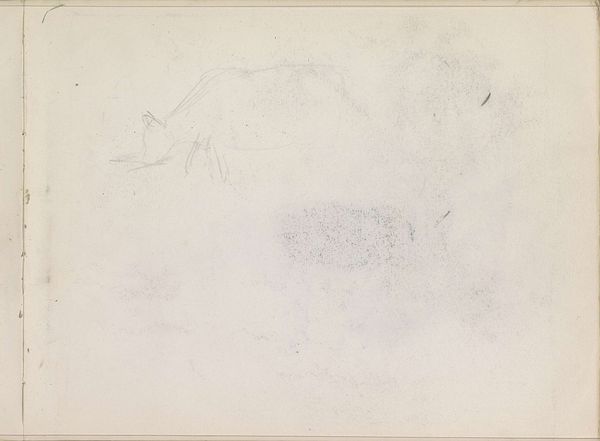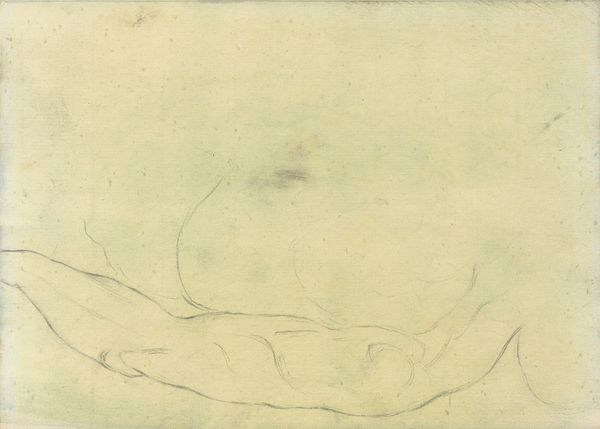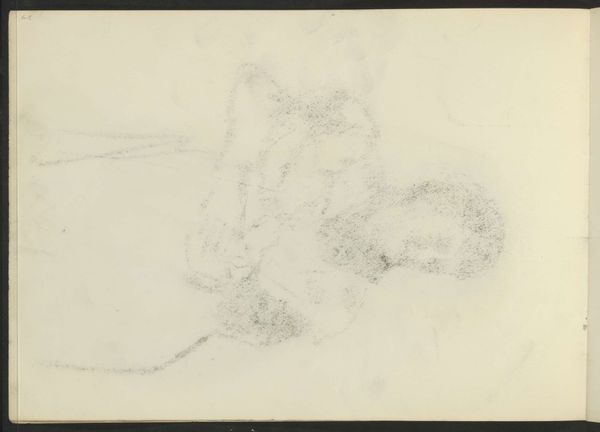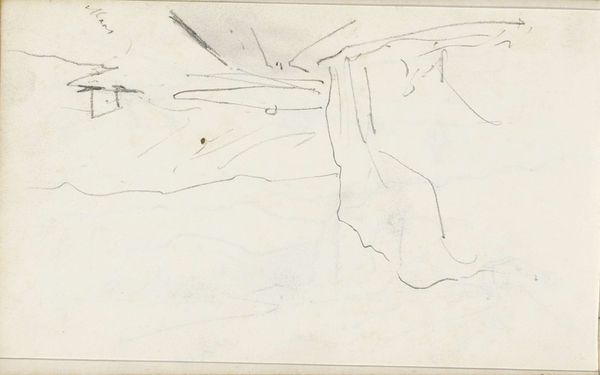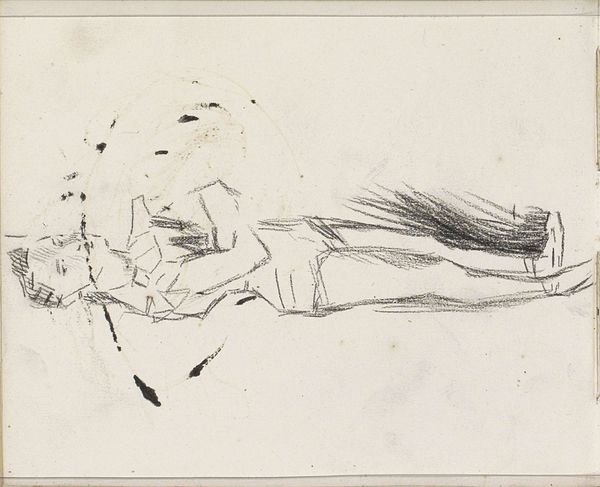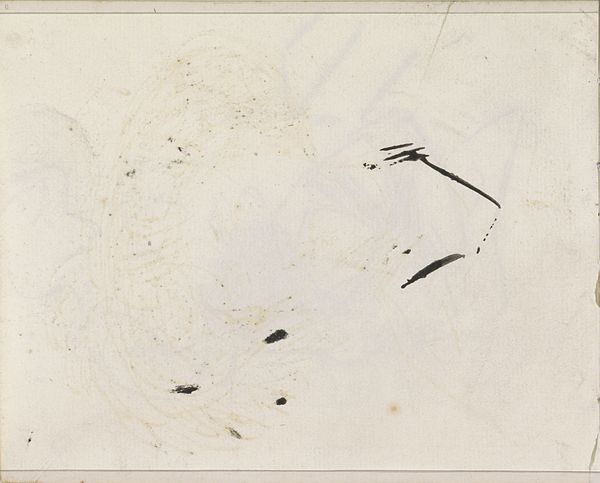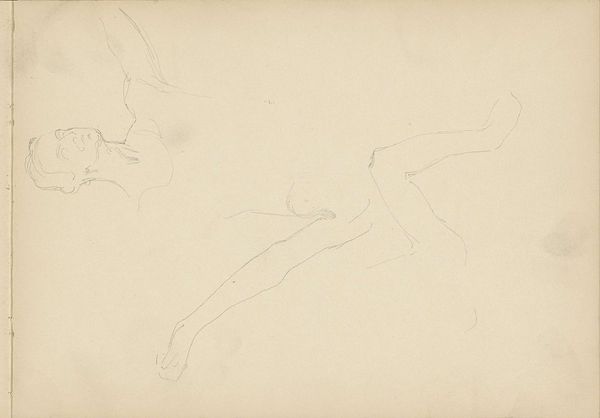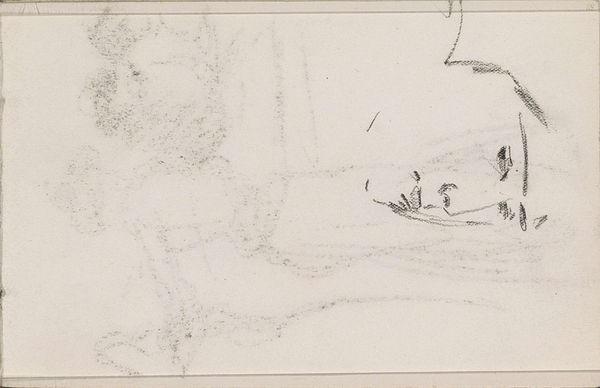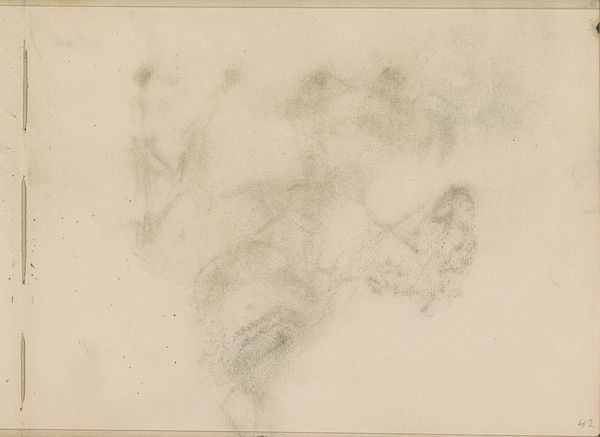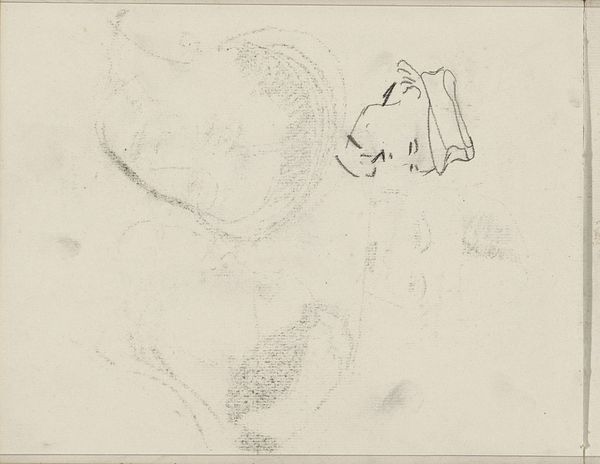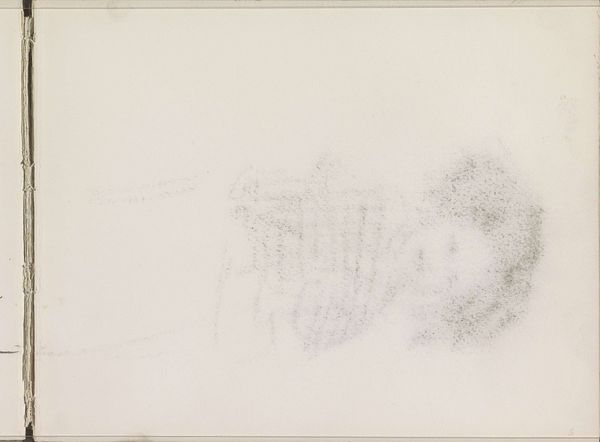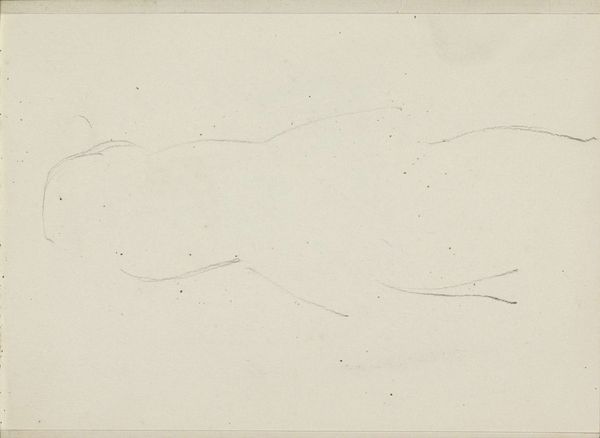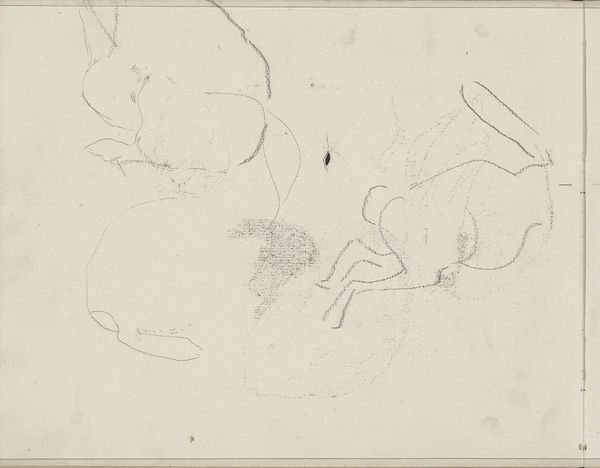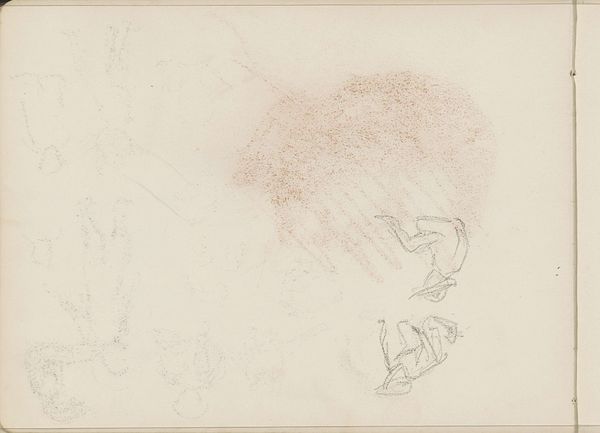
drawing, pencil, graphite
#
pencil drawn
#
drawing
#
amateur sketch
#
light pencil work
#
pencil sketch
#
sketched
#
incomplete sketchy
#
form
#
detailed observational sketch
#
pencil
#
rough sketch
#
abstraction
#
line
#
graphite
#
pencil work
#
initial sketch
Copyright: Rijks Museum: Open Domain
Editor: Here we have "Studie en een abklatsch van een krijttekening," which roughly translates to "Study and a Counterproof of a Chalk Drawing," created between 1875 and 1934 by Isaac Israels. It’s a pencil and graphite drawing housed in the Rijksmuseum. The thing that immediately strikes me is its incredibly sparse nature; it feels almost ghostly. What do you see in this piece? Curator: Precisely. Notice the artist's use of line. How does the composition, the arrangement of these lines, dictate our perception? We see fleeting impressions, yes? Barely-there strokes of graphite creating the *idea* of form, rather than concrete shapes. The use of negative space is just as crucial. Editor: Absolutely, the emptiness around the lines really amplifies the tentative feel of the sketch. It's interesting how little is there, but how suggestive it is. Is Israels intentionally leaving so much open to interpretation? Curator: Consider how the *quality* of line—its weight, its direction, its hesitancy—creates a dialogue with the concept of "study" itself. What is the nature of inquiry if not an exploration through suggestion and revision? Look at the variation of mark-making: Smudged areas exist adjacent to sharp contour lines, an opposition of distinct characters which guides our observation and engages active contemplation. Editor: So, it's almost about the process of seeing, rather than presenting a complete image? The marks themselves become the subject. Curator: In effect, yes. The inherent flatness of the paper becomes activated. There's no pretense here of depth or imitation of reality in a mimetic sense. Rather, the artist confronts the raw materials – graphite, paper, line – and presents the genesis of form itself. Editor: It makes me rethink the definition of "finished" in art. The incomplete nature here is so compelling. Curator: Indeed. A vital lesson of formal analysis is realizing the inherent beauty found within the structure and process, beyond subject matter. It encourages contemplation and fosters intellectual curiosity. Editor: Thanks, I can appreciate now how this emphasis on the structural and material can radically alter your interpretation of the artwork.
Comments
No comments
Be the first to comment and join the conversation on the ultimate creative platform.
